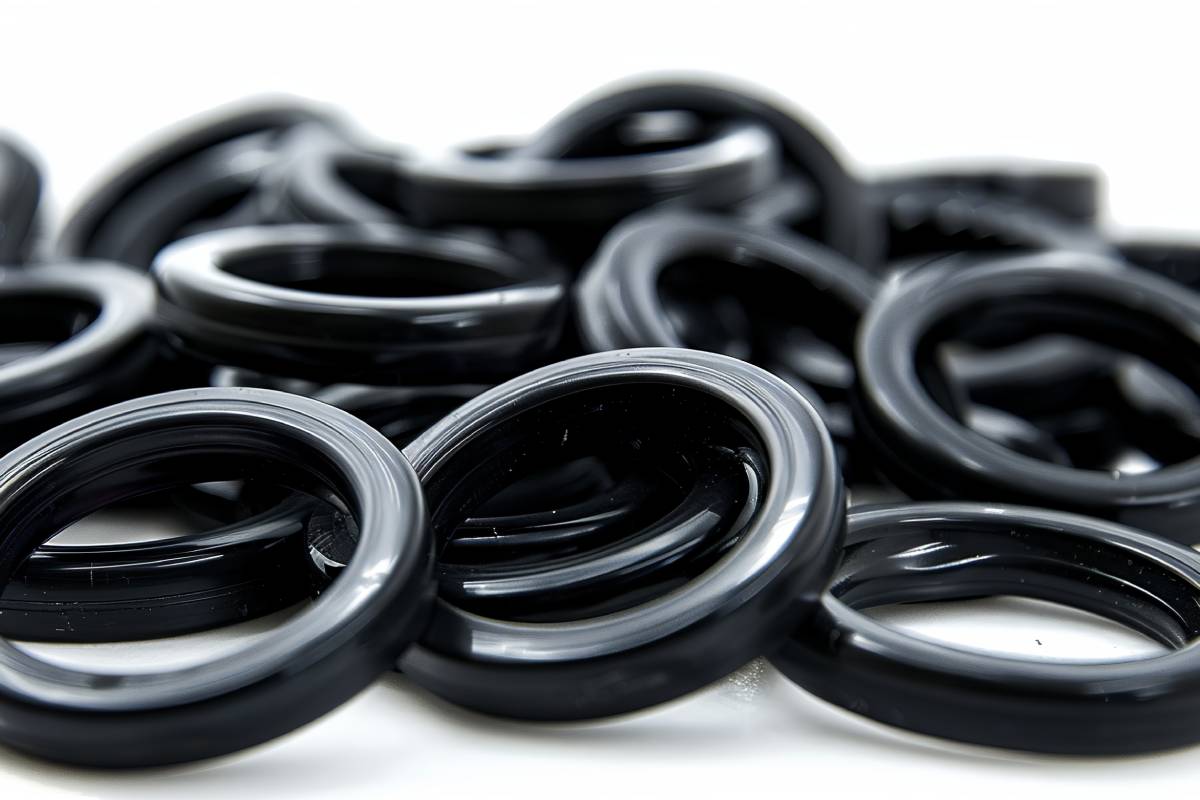
07 Feb What Does Shore Mean For O-Rings?
Understanding shore hardness is essential for optimal performance when selecting O-rings. This measurement has nothing to do with the beach; shore assesses material hardness, which directly affects an O-ring’s ability to seal, resist pressure, and adapt to environmental factors. The I.B. Moore Manufacturing team is glad to explain the significance of Shore ratings and how different hardness levels influence o-ring performance across various applications.
Why Is Shore Hardness Important for O-Rings?
The hardness of an O-ring affects its ability to form an effective seal and withstand external factors like pressure, temperature, and chemical exposure.
- Materials with lower shore hardness are softer and more flexible, allowing them to conform to uneven surfaces. These are ideal for low-pressure systems or applications requiring a high degree of compression.
- Harder materials with higher shore ratings are better suited for high-pressure environments. They resist deformation under force and maintain structural integrity over time, making them ideal for demanding applications like hydraulic systems.
Does the Shore Hardness Scale Show O-Ring Hardness?
The Shore Hardness Scale is a measure of material hardness, which directly impacts the performance and application of O-rings. Shore hardness indicates the material’s resistance to deformation under pressure, a critical measurement for ensuring that O-rings provide reliable sealing while accommodating specific operating conditions.
The Shore Scale, often referred to as the durometer scale, categorizes hardness levels with numerical values. Bear in mind that a durometer is a tool, not a unit of measurement—the Shore Hardness Scale establishes the appropriate reference point.
How does this scale work? It ranges from 0 to 100, with lower values indicating softer materials and higher values denoting harder ones. For example, a softer O-ring material may have a Shore A rating of 40, while a harder one might be rated 90.
Using a Durometer
A durometer is a tool that measures the hardness of non-metallic materials, like neoprene, nitrile, and rubber. It looks like a tire pressure gauge, with a spring or needle and a number gauge.
To use a durometer to establish an O-ring’s Shore hardness, place the O-ring on a horizontal, flat surface. Hold the durometer over the sample until the indentor touches it. Then, push down until the durometer’s pressure foot contacts with the sample. The material’s hardness is determined by measuring its resistance to penetration and any resulting permanent indentation; the reading should be between 0 and 100.
O-Ring Hardness and Environmental Factors
Environmental conditions play a significant role in determining the appropriate shore hardness for O-rings. For example:
- Extreme temperatures can cause softer materials to lose elasticity or harder materials to crack.
- Chemicals and lubricants also affect O-ring performance, with certain compounds being more resistant to degradation.
Selecting the right hardness ensures the O-ring maintains its sealing properties, even under harsh conditions; it also prevents failures.
Practical Tips for Choosing O-Ring Hardness
By understanding these variables, designers make informed choices that optimize the effectiveness of their o-ring systems.
- Evaluate Operating Pressure: Softer materials are often sufficient for low-pressure applications, but high-pressure systems may require harder O-rings to prevent extrusion.
- Consider Surface Finish: A rougher surface may need a softer O-ring to achieve an effective seal, while smoother surfaces can work well with harder materials.
- Account for Movement: For applications with frequent motion, softer O-rings reduce friction and improve durability.
- Test Compatibility: Always test O-ring materials against the fluids and temperatures they will encounter before using them.
What Does Shore Mean for O-Rings in Custom Applications?
Custom applications require precise specifications for O-rings, including shore hardness. Whether designing for extreme temperatures, chemical exposure, or unique pressure requirements, tailoring hardness levels drives optimal performance.
In custom manufacturing, it’s essential to strike a balance between the flexibility of softer materials and the durability of harder ones. This balance minimizes risks like leaks or material degradation over time. We work closely with clients to design and select materials with the appropriate shore ratings, taking into account the specific application demands.
Work with I.B. Moore for Your O-Ring Needs
Choosing the right shore hardness is a vital step in designing reliable O-ring solutions. At I.B. Moore Manufacturing, we specialize in creating custom O-rings tailored to your specific requirements. With decades of experience and a commitment to precision, we help you find the ideal balance of flexibility and durability for your sealing applications. Contact I.B. Moore Manufacturing in Lexington, KY, to request a quote for nationwide service.
